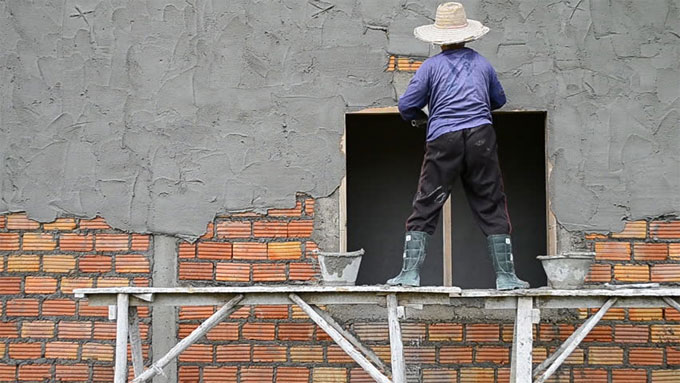
Guidelines for plastering a house
This civil engineering article focuses on the method of Plaster and vital steps involved in plastering work.
Plastering is the method of wrapping the blocks walls and ceiling with a smooth finish with different plaster materials (a blend of Cement and sand with a specific ratio 1:1/5,1:2,1:3 etc. according to the work requirements).
Pre-plaster inspection phases:
? Initially, verify all the dimension(Sizes) of rooms
? Verify Angle/Diagonal of rooms
? Verify opening size of Doors & windows
? Examine the verticality of Brick or Block wall
? Ensure that all MEP services (Mechanical, Electrical & Plumbing work) is set up.
? Ensure that all MEP services are covered with wire mesh.
? Ensure that corner beads are installed
? Verify that plastering mesh is set up among concrete & masonry surface.
? Dust & other lose material are detached and cleansed
? Now check that point is fixed on each wall that is a reference for plastering level & thickness of plaster, the distance & the guide points are based on the aluminum straight edge length.
? A rush coat should be provided on the wall surface. The plaster work of the surface should be accomplished after drying the surface.
? Plastering work should be performed on the basis of the specifications like lime finish, trowel finish, sponge finish, rough plaster and zone of application specified by the architects.
? The thickness of plaster should not surpass 15mm. If necessary, the plastering should be performed in 2 coats. The first layer used should be cured for a day prior to deploy the following coats.
? All surfaces in concrete should be hacked/Chipped prior to plastering with the purpose of providing a good bonding among plaster and concrete.
The following points should be taken into consideration during Plastering:
? All surfaces prepared for plastering should be soaked to get rid of absorption of water from plaster.
? Mix should be maintained according to specification but normally it is 1:2 or 1:3 for ceiling and 1:3 or 1:4 for wall plastering.
? Mix of mortar should be accomplished with Measuring Box (Farma) for volumetric batching.
? Mix comprehensively for making it level and the mortar should be applied within 30 minute to 1-hour maximum.
? Once plastering is completed verify the surface with halogen lamps for undulations. To detect undulations, yellow light is thrown on the plastered wall from one side, if it is found, it should be altered instantly when the plaster is still afresh. All cut-outs like fan, junction box, electrical box and skirting line should be completed perfectly and should be leveled with the surface.
? Grooves and mortar bands should be provided when the plaster is soaked.
? If case of lime rendering, execute it within 3 to 4 hour of the setting of cement mortar once the plastering is completed.
? As soon as the plastering work is finished, curing should be performed for minimum 3 days
? It is recommended to apply potable water/ sweet water for curing
Care required after Plastering:

? Cure the works for at least 7 days.
? A proper record of everyday work should be retained to track single activity properly. Mark the date of plastering on the wall/ceiling with a permanent marker to trace the curing days.
? All mortar waste glued to walls & floor should be cleansed correctly after each day?s work.

